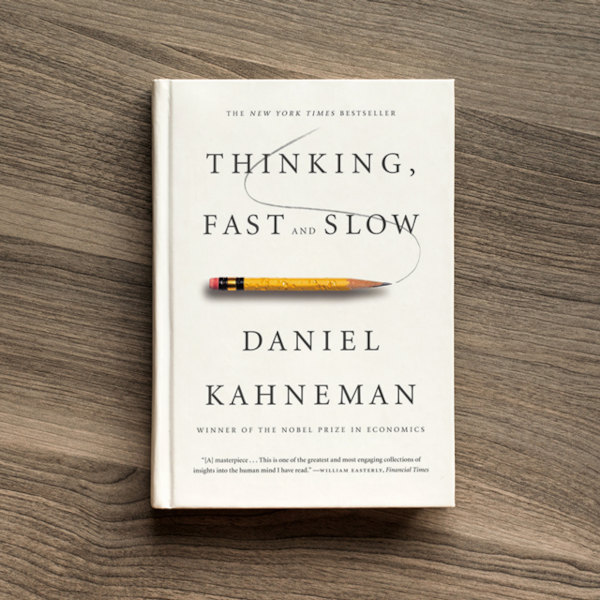"Thinking, Fast and Slow" by Daniel Kahneman

"Thinking, Fast and Slow" is a book written by Nobel Prize-winning psychologist Daniel Kahneman. The book focuses on the two distinct systems of thought that humans use - intuitive and deliberate. Kahneman uses his own research and a wealth of other studies to explain how these systems work, how they interact with each other, and how they can affect decision-making and judgment in various situations.
Key Takeaways:
System 1 and System 2
One of the central ideas in the book is the distinction between two separate systems of thought - System 1 and System 2. System 1 is the intuitive, automatic mode of thinking that is quick and effortless. It uses patterns and heuristics to make judgments and decisions based on limited information. System 2, on the other hand, is the deliberate, slower mode of thinking that is conscious and effortful. It is used for tasks that require more attention and mental effort, such as solving math problems or analyzing complex data.
Understanding the differences between these two systems is important for understanding how people make decisions and judgments, and how they can be influenced by various biases and heuristics.
Biases and Heuristics
Kahneman also discusses a variety of cognitive biases and heuristics that can affect decision-making and judgment. For example, the availability heuristic is the tendency to rely on readily available information, even if it may not be representative of the overall picture. The anchoring effect is the tendency to be influenced by an initial value or reference point, even if it is arbitrary.
Kahneman argues that these biases and heuristics are often unconscious and automatic, and can lead to errors in judgment and decision-making. However, he also suggests that understanding these biases and heuristics can help people make better decisions and avoid common pitfalls.
Prospect Theory
Another key idea in the book is prospect theory, which is a model of decision-making under uncertainty. According to this theory, people value gains and losses differently, and are more risk-averse when it comes to gains than losses. For example, people may be more likely to take a guaranteed $500 payout than a 50-50 chance at $1,000, even though the expected value is the same.
Kahneman suggests that understanding prospect theory can help people make better decisions in a variety of contexts, from investing to public policy.
The Illusion of Understanding
Kahneman also discusses the illusion of understanding, which is the tendency to feel like we fully understand complex phenomena even when we have limited information or incomplete models. This illusion can lead to overconfidence and can make it difficult for people to learn from their mistakes.
Understanding the illusion of understanding is important for scientists, policymakers, and anyone who seeks to understand complex phenomena. Kahneman suggests that recognizing this illusion can help people be more humble and curious, and can help them avoid making faulty assumptions.
The Power of Intuition
Despite the book's focus on the potential pitfalls of intuition, Kahneman also emphasizes the power and importance of intuition. He argues that intuition can be an effective and efficient way of processing information, particularly in situations where time is limited or the amount of information is overwhelming.
However, Kahneman also suggests that intuition can be improved through deliberate practice and feedback. By learning to recognize patterns and errors in our intuitive judgments, we can become more effective and efficient decision-makers.
Conclusion:
"Thinking, Fast and Slow" is a comprehensive and fascinating exploration of the two systems of thought that humans use, the biases and heuristics that can affect decision-making, and the power of intuition. By understanding these concepts, readers can gain valuable insights into their own thought processes and improve their decision-making skills.